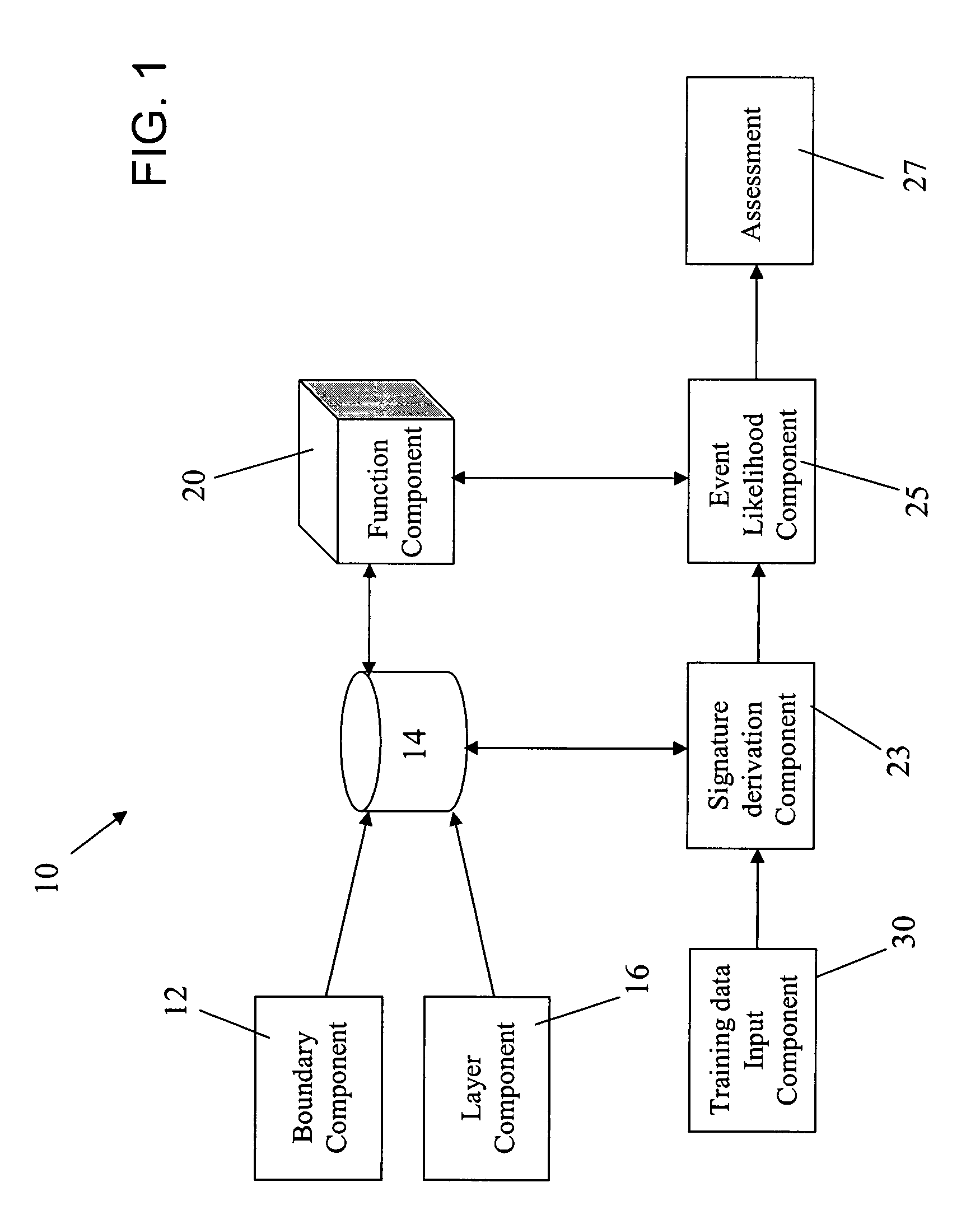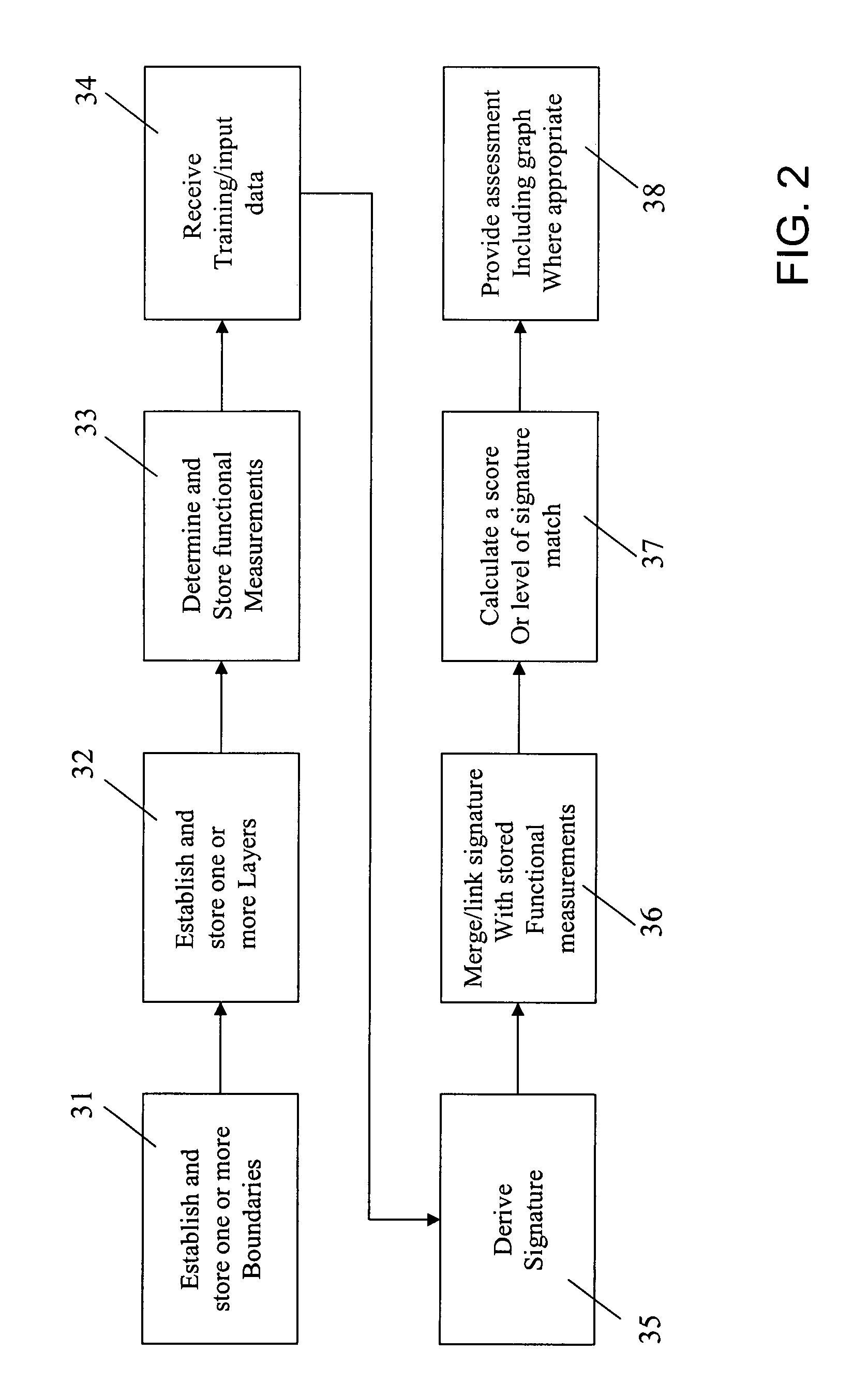Event, threat and result change detection system and method
a detection system and event technology, applied in the field of spatial modeling, can solve the problems of not simultaneously allowing rapid assessment determinations with increased accuracy, system failure to detect changes in event, threat or result signatures, and limited systems of past systems, so as to achieve rapid and more accurate assessment determinations
- Summary
- Abstract
- Description
- Claims
- Application Information
AI Technical Summary
Benefits of technology
Problems solved by technology
Method used
Image
Examples
example 1
[0112]The following example is provided as an illustrative case of the operation of the present invention.
[0113]User A is a metropolitan crime analyst who develops planning maps for the tasking of law enforcement units. Due to a recent increase in breaking and entering offenses, User A desires to create a summary map that will describe the likelihood of a breaking and entering event occurring throughout her city.
[0114]FIG. 14 is an example geographical depiction of an area of interest 140 within User A's city, available through the boundary component of the present invention. As noted by elements 141 in FIG. 15, User A can apply training data from the previous month's breaking and entering offenses onto the area of interest, using training data input component 30. As shown in FIG. 16, User A can then import relevant base layer data from her city as available through layer component. The layers included are “roads”142, “rivers”143, “cul-de-sacs”144, and “street lamps”145.
[0115]User A...
example 2
[0120]The following example is provided as an additional illustrative case of the operation of the present invention.
[0121]User B is a planning district manager deciding on the best location for a new municipal fire station. There are twenty-two possible neighborhoods in the city where a fire station could be located. User B would like to recommend a location that will place the new fire station in the area most likely to have fire incidents causing a significant amount of damage based on observed data for the previous year. The travel time for an emergency vehicle to the fire location is the primary measure of distance for this task. Data for city locations is stored in a parcel map outlining each identified parcel in the community; these parcels will be used as the output grid for the analysis.
[0122]As shown in FIG. 21, User B applies training data 210 from the previous year's house fire incidents. In this example, User B uses the invention to import relevant base layer data from ...
example 3
[0129]The following example is provided as an additional illustrative case of the operation of the present invention.
[0130]User C is a shopping mall designer / manager. The flow of shoppers through the facility and their shopping habits is of interest to User C. C creates a spatial assessment of shopping for electronics making use of the invention. User C realizes that there is far too much traffic concentrated at the south entrance to the shopping mall and wishes to move a portion of the traffic to the north entrance area. User C determines that he can modify the locations of valet parking stations, ATM machines, and mall security stations. By examining the attraction-avoidance index for each feature, User C discovers that ATMs and valet parking are attractor features, while security stations are repellors. User C uses the Spatial Behavior Modification tool to find the best locations for the available features, and determines locations for the ATMs, valet parking, and security statio...
PUM
 Login to View More
Login to View More Abstract
Description
Claims
Application Information
 Login to View More
Login to View More - R&D
- Intellectual Property
- Life Sciences
- Materials
- Tech Scout
- Unparalleled Data Quality
- Higher Quality Content
- 60% Fewer Hallucinations
Browse by: Latest US Patents, China's latest patents, Technical Efficacy Thesaurus, Application Domain, Technology Topic, Popular Technical Reports.
© 2025 PatSnap. All rights reserved.Legal|Privacy policy|Modern Slavery Act Transparency Statement|Sitemap|About US| Contact US: help@patsnap.com



